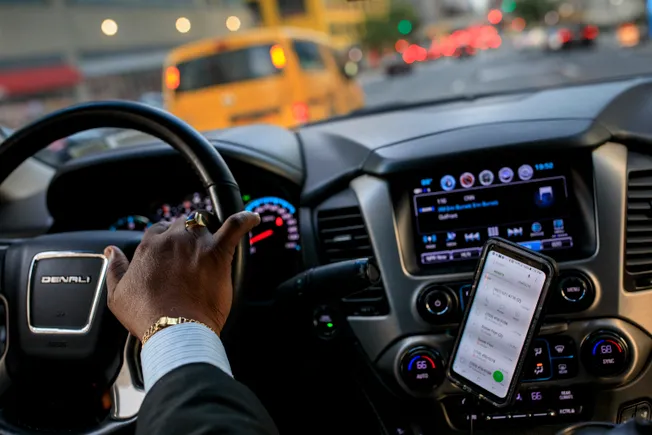There was a time when ride-share company Uber’s almost imperceptible app-based payments system was an outlier.
Uber’s payments process was one of the earliest forms of embedded payments, a concept that entails the streamlining of a checkout process so consumers barely know they’re hitting the ‘pay’ button. Businesses take a consumer’s payment information when that person signs up for services, and never asks for it again. Instead, the service provider charges automatically for each transaction.
Now, embedded payments are a part of a broader move toward service providers’ use of embedded finance, by which merchants and retailers offer consumers not only payments services, but also sell them other services such as insurance, bank accounts and loans.
As use of embedded payments rises, this primer is intended to give industry professionals and others a better understanding of the role this advancing technology plays in the marketplace.
When a payment is “embedded,” that means the process of paying is woven so seamlessly into an app or website that it is almost invisible to the consumer, Vinay Prabhakar, chief marketing officer for the Jersey City, New Jersey-based payments company Volante Technologies, said of embedded payments.
“We don’t actually ever make a payment as part of the experience, the payment is a byproduct of the experience and certain actions we take,” he said.
Embedded payments have existed for years, but payments industry insiders like Prabhakar say the process will grow more common in the years to come as retailers and other merchants seek to streamline the checkout process and receive their money more quickly.
The definition can change depending on who you ask, but in general, an embedded payment is “a payment integrated into a nonfinancial service,” said Terry O’Neil, head of connected commerce and strategic growth for Citi Retail Services.
Some of the companies that provide embedded payment services are banks, but others are those that extend such services to banks and merchants. They include Volante as well as the global digital payments giant Stripe, the Oakland, California-based commercial card company Marqeta and Dutch processor Adyen.
For instance, Adyen, which has a regional headquarters in San Francisco and a U.S. banking license, lets merchants that want to embed payments services in their websites or apps use Adyen’s network to receive their money more quickly, said Blake Breathitt, senior vice president of global platforms and financial services for Adyen.
“We provide this payment processing infrastructure that they’re able to run their payments business on top of,” he said.
Major financial institutions like banks are still involved in the process (more on that later), but when financial services like payments are “embedded,” you never have to leave the store, a company’s app, or the merchant’s website, in order to pay.
Embedding the payments process in an app, website or service can save consumers time, Todd Pollak, chief revenue officer for Marqeta, said by email.
The process makes “it simpler for customers to make payments directly within a brand’s experience instead of being redirected to an external payments site,” he said.
And embedded payments benefit merchants by helping them develop a long-term relationship with customers, Pollak said.
The explosive growth of embedded payments
The number of merchants offering embedded payments is only expected to grow.
The global market for embedded finance as a whole will more than double between 2024 and 2028, growing from $92 billion to $228 billion, the United Kingdom-based Juniper Research projected in an April report.
“This growth is driven by increasing market maturity and consumer confidence, supported by greater acceptance and applications,” Juniper’s report said.
The example set by Uber is “why you have tech companies and platform companies today that can create frictionless (payment) experience,” said Sunil Sachdev, head of embedded finance for Fiserv.
Why is embedded finance important?
Trends in payments are moving in the direction of speed and convenience. And devices like smartphones and tablets, which grow more sophisticated by the day, offer more access to embedded payment and financial services.
“We live in a day and age where a business would say ‘I want to have the best customer experience or consumer experience possible with the people that I service,’ and that’s where they would like to bring payments experience into what they’re doing,” said Mike Jorgensen, head of emerging solutions and strategy for US Bank.
For merchants, embedded payments make it easier for customers to pay them directly, said Jeff Tijssen, global head of fintech at the consulting firm Bain.
Technological advances are enabling that experience, Juniper’s April report said.
Breakthroughs in advanced artificial intelligence, which is increasingly used by the payments industry, could turbocharge adoption of embedded payments by streamlining the process even further, said Agustin Rubini, a banking and investment services analyst with the research and consulting firm Gartner, which provides research to fintech companies.
“AI is helping with convenience by providing the necessary brain power to approve finance,” he said.
In an instant, an artificial intelligence program can provide the necessary checks and approve a money transfer, Rubini said.
Banks also benefit
Just because payments are made straight through a company’s app or website, doesn’t mean that banks and other financial institutions are omitted from the process.
“We’ve seen so much interest from banks, from insurance companies, from wealth companies,” Tijssen said.
Merchants want embedded payments processing, he said, which gives banks that offer embedded finance services an opportunity to work with more businesses.
Lia Cao, the global head of embedded finance at JPMorgan Chase, the largest U.S. bank, has explained how that financial institution is actively scouting for more ways in which it can deploy embedded payments. The bank already has viable use cases in the healthcare and auto industries, but it’s seeking more opportunities, including potentially in insurance and oil and gas industries, Cao said earlier this year in an interview.
In another bank offering, US Bank, for example, provides the software merchants can use to embed payments into the shopping experience.
“US Bank is big into moving into the profit center, and helping the customer with money movement that supports their customer experience,” Jorgensen said.
Industry insiders like Jorgensen and Tijssen only expect embedded payments to proliferate, given consumers preference for convenience and businesses’ preference for speed.
“There’s not a single bank that isn’t actively looking at this, or hasn’t launched some embedded finance proposition,” Tijssen said






